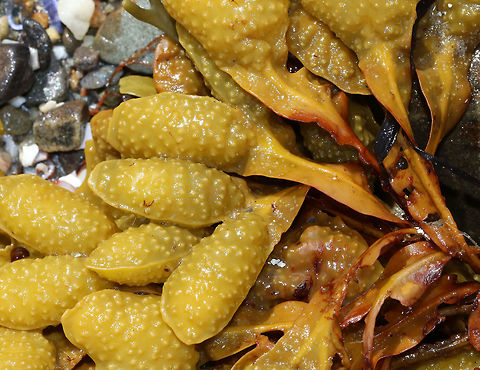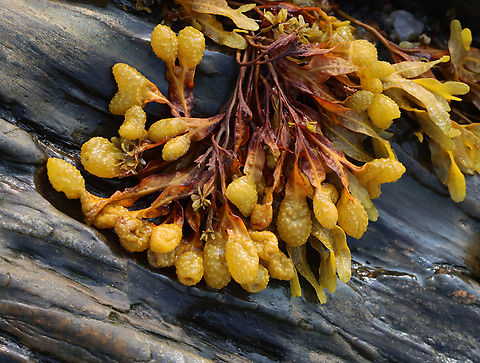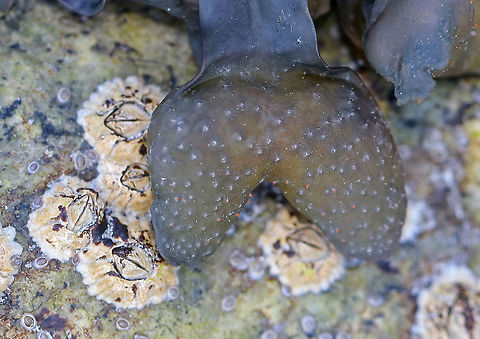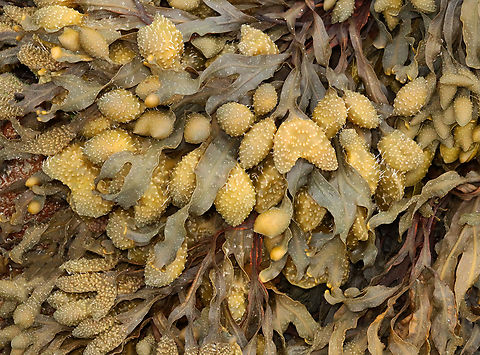
Appearance
"Fucus spiralis" is olive brown in colour and similar to "Fucus vesiculosus" and "Fucus serratus". It grows to about 30 cm long and branches somewhat irregularly dichotomous and is attached, generally to rock, by a discoid holdfast. The flattened blade has a distinct mid-rib and is usually spirally twisted without a serrated edge, as in "Fucus serratus", and it does not show air-vesicles, as "Fucus vesiculosus".
Distribution
"F. spiralis" is common on the coasts all around the British Isles, western coasts of Europe, Canary Islands and North-eastern America.
Habitat
The other common species of "Fucus" on the coasts of British Isles: "Fucus spiralis", "Fucus vesiculosus" and "Fucus serratus" along with "Ascophyllum nodosum" form the main and dominant seaweeds on rocky shores. These three species, along with two others "Pelvetia canaliculata" and "Ascophyllum nodosum" form the zones along the shore.
Evolution
The reproductive bodies form rounded swollen tips on the branches, usually in pairs.In the conceptacles oögonia and antheridia are produced after meiosis and then released. Fertilisation follows and the zygote develops directly into the diploid sporophyte plant.
References:
Some text fragments are auto parsed from Wikipedia.